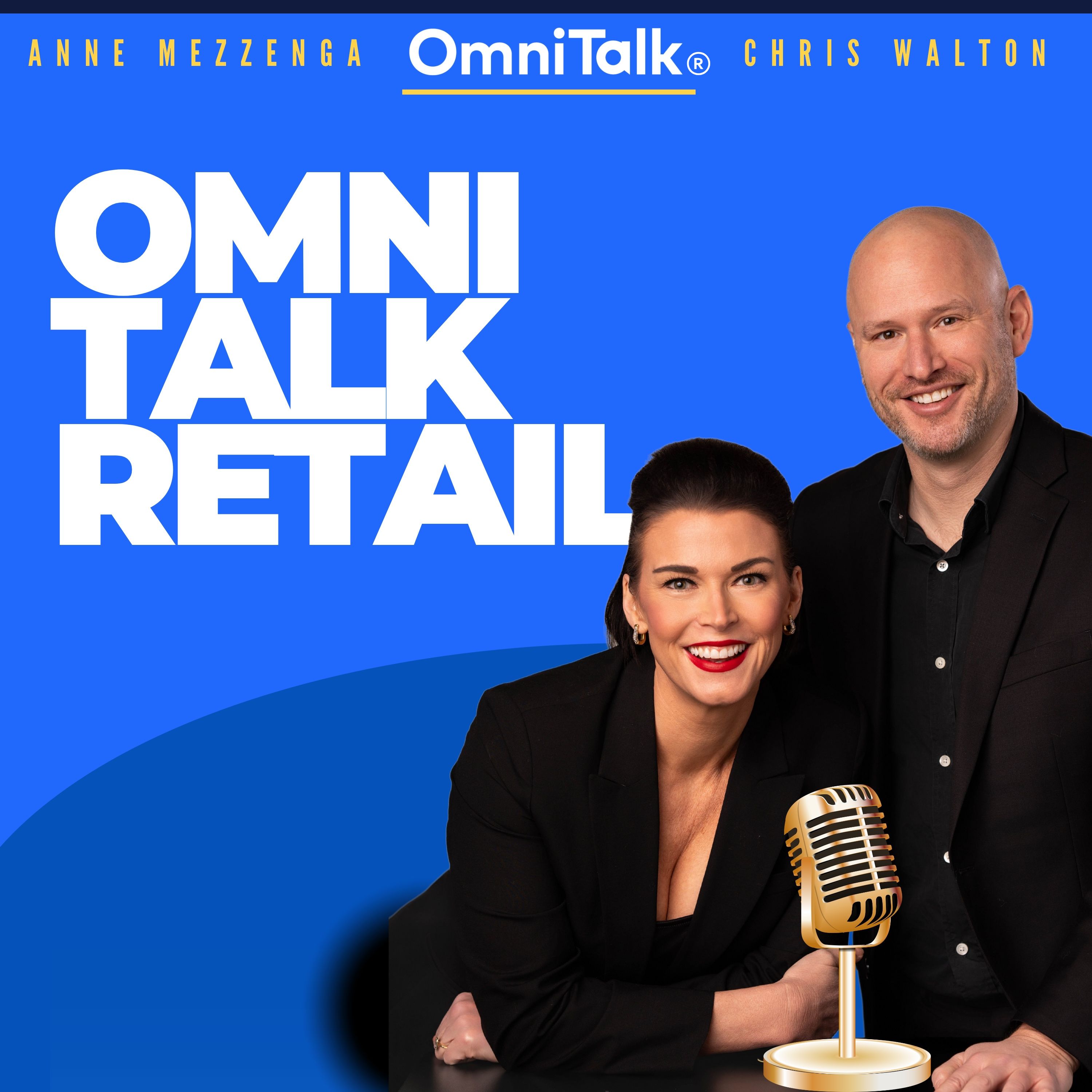Fast Five Shorts | What Does Walmart Symbotic Deal Signal About Its Approach To Delivery?
In the latest edition of Omni Talk’s Retail Fast Five, sponsored by the A&M Consumer and Retail Group, Mirakl, Simbe, Ocampo Capital and Scratch Event DJs Chris Walton and Anne Mezzenga are joined by co-hosts from the Alvarez & Marsal Consumer & Retail Group, Kelly Carey and John Clear. In this clip, the group discusses: What Walmart's Symbotic Deal Signals About Its Approach To Delivery?
For the full episode head here: https://youtu.be/s3yeI48E9A0
This podcast uses the following third-party services for analysis:
Podcorn - https://podcorn.com/privacy
Transcript
Symbotic has struck a deal to expand its partnership with Walmart.
Speaker A:According to the Wall Street Journal, Symbotic will take on a $520 million program to develop an automated delivery platform for Walmart stores while also agreeing to buy the retail giant's advanced systems and robotics business.
Speaker A:Walmart will fund a development program that aims to leverage Symbotics artificial intelligence enabled robotics platform and will seek to enhance Walmart's current online pickup and delivery fulfillment systems and design new systems.
Speaker A:Symbotics said that if performance criteria are met, Walmart is committed to buying and deploying systems for 400 accelerated pickup and delivery centers at stores over a multi year period.
Speaker A:John, you're Mr.
Speaker A:Grocery here, we're going to you first.
Speaker A:Why would Walmart ink this deal with Symbiotic and what do you think it says about Walmart's approach to delivery?
Speaker B:Yeah, so this is actually, it's great because it's like the only grocery topic we have almost a grocery Jason and it's still not quite there today.
Speaker B:So I'll do.
Speaker C:Right, right, right.
Speaker B:And I do have to just before I start, give a shout out to my brother David who works for a company called Autostore who are also in the robotics space.
Speaker B:So I was able to get a good insight from him last night on the kind of information on this deal.
Speaker B:So that's super helpful for me.
Speaker C:Competitive intelligence, I love it.
Speaker B:Yeah, I'll try and be careful what I share.
Speaker B:Right.
Speaker B:He was on the gossip side of things but I'll try and keep it factual here.
Speaker B:Right, but, but I do think generally speaking if you look at it first of all from like the industry lens, one of their key kind of accelerants, enablers over the last number of years has been this focus on technology.
Speaker B:So throughout their organization they're super focused on technology.
Speaker B:They already have an existing deal with Symbotic on like large scale DCs and automation of their DCs which has been successful.
Speaker B:And the way I would kind of position that is Symbotic have been pushed very hard by Walmart to improving up their game which has then driven Symbotics growth over the course of that time.
Speaker B:If you take this as a separate piece then this is a little bit more focused on their what I think used to be called MFCs but people have slightly away from the turn MFCS I think because there's been some difficulties in getting that off the ground.
Speaker B:And so maybe not to get into too much detail, but Walmart acquired Alert a number of years ago to bring them in to do this work.
Speaker B:And now they're effectively spinning that work back out to Symbotic.
Speaker B:And so the way I would read that is they brought it in house, maybe found that it was more complicated than they expected to make this work with their own internal capabilities.
Speaker B:And because it's a complicated process and what they're really doing is I think doubling down on automation as a key pillar for their growth by going to an industry leader in the space and saying to them, we want you to recreate the success you've had on large scale distribution centers to MFCs because it's obviously a key pillar for what they want to do, particularly using their stores as fulfillment nodes.
Speaker B:Right.
Speaker B:They haven't quite got that off the ground in the way that everybody was expecting.
Speaker B:I think that it, the structure of the deal is also very interesting.
Speaker B:So it's being quoted as Symbotic have bought it for $200 million.
Speaker B:But when you go below the surface, Walmart are going to pay them 500 million.
Speaker B:There's 230 million guaranteed at closing.
Speaker B:There's 100 stores that they're guaranteed.
Speaker B:So it's a very low risk deal for Symbotic that I think will hopefully clean up some potential issues that Walmart have had internally.
Speaker B:And for me it's kind of another example of Walmart betting on innovation to continue to grow their performance.
Speaker B:Because I mean, Chris, I know you're a big fan of Doug McMillan, but it has been a huge success over the last number of years of how much they've grown.
Speaker B:And I think this is just another signal of them continuing to double down on, on what they've seen work so far?
Speaker A:Yeah, I mean, Chris, how much do you think too, with John saying like how much of this plays into probably the acceleration that Walmart has seen with delivery with grocery in the last couple of years.
Speaker A:Like that's causing a lot of strain on their systems, I'd imagine.
Speaker A:So what, what are your thoughts here on this investment and what John had to say?
Speaker C:Yeah, I mean I gave John a shout out at the beginning and John followed suit very well and got the great competitive intelligence here.
Speaker C:I mean, I think, I think.
Speaker C:And your question's dead on.
Speaker C:I mean, I think, you know, Walmart plays the long game, you know, as well as anyone right now.
Speaker C:And I think that's really what, you know, Doug McMillan the team are doing here and David Gugina, the head of supply chain too.
Speaker C:Um, the, the, the, the rap I would put on this in terms of what John said is like And I keep thinking about, and we were talking about this even before we got on the show today, I keep thinking about the, the fabric Save A Lot experience that we saw in Brooklyn, New York and, and just how easy it was to plug into a community that you don't previously serve.
Speaker C:Right.
Speaker C:And, and we saw Uber drivers coming in there left and right and all this thing was, was stood up on an Uber Eats marketplace for Save A Lot and they were doing business out of it.
Speaker C:So, so if I'm Walmart, I think I'm in the two angles I would add here to what John said is I like this move, number one, but I'm thinking about these two things.
Speaker C:I think number one, I'm thinking about how do I extend Walmart plus because I've been successful extending my demographic, I can reach higher incomes.
Speaker C:It brings the robotics play into the cities like we saw with fabric and Save a Lot.
Speaker C:So I think that's a piece of this.
Speaker C:But the other part of this that I think is really interesting that talks about their strategy relative to others is Walmart can't really take the sortation center approach that like Target is taking because of where their stores are located.
Speaker C:Their stores are very rural based.
Speaker C:So to get that same day delivery efficiency they have to go to robotics and they have to go to robotics in the store itself via micro fulfillment.
Speaker C:So that's the key thing here.
Speaker C:And I think that's what separates Walmart in terms of how they're thinking about the landscape relative to Target and even like Amazon too in terms of their approach.
Speaker C:So.
Speaker C:So honestly I can't stop thinking about the potential here that if Walmart cracks the code on this, this is why it's a great investment.
Speaker C:If they crack the code on this over 10 years, like Walmart could have a very profound presence in the biggest cities in America in a way that they just don't have right now.
Speaker A:Yeah.
Speaker C:And with an income demographic that they just don't have in those cities.
Speaker C:So that's the play here.
Speaker A:Yeah, I agree, Chris.
Speaker A:I mean, I think the thing is that this will also in the long run help Walmart keep prices low, which is exactly the driver you're talking about.
Speaker A:Like you think about, you know, the Save A Lot example.
Speaker A:If I'm going on a marketplace and I'm just buying eggs, like Save A Lot popped up as the cheapest place to buy eggs.
Speaker A:And you know what, I don't really care where I'm getting which retailer I'm getting my eggs.
Speaker A:But if I get served up three options and that's the cheapest.
Speaker A:I don't care if they have a physical presence or not.
Speaker A:That's where I'm going to go.
Speaker A:And I think that's what this keys in on here.
Speaker A:That Walmart will be able to do things more efficiently.
Speaker A:They're eliminating the bottlenecks of manual picking from.
Speaker A:They're, they're processed like you said to you know, ship from store.
Speaker A:And this is something that you know will just continue to develop.
Speaker A:They'll keep learning from and be able to serve more people.
Speaker A:But jump back in.
Speaker A:Chris.
Speaker C:Well, no, I just want to, I wanted, I just wanted to point out because I think you're dead right like just because you were there with me.
Speaker C:How many people did Save A Lot have working that that facility too?
Speaker A:Like they need two people to people two pickers.
Speaker C:We saw more Uber drivers coming in than there were workers in the, in the three hours we were there.
Speaker C:Yeah.
Speaker A:Yep.
Speaker A:And picking all things like again I think that's the key thing.
Speaker A:Like fresh frozen ambient.
Speaker A:There was no manual labor associated with the picking process.
Speaker A:It was all coming to those two individual baggers and that was it.
Speaker A:That was all they needed.
Speaker A:But Kelly, any last minute thoughts here to close us up?
Speaker D:Definitely excited to see where it goes.
Speaker D:I think that the, the Save A Lot example is a great one.
Speaker D:If they can start to get that kind of scale it'll be really interesting.
Speaker D:The city play that you mentioned is, is one I'm excited to see play out as well.
Speaker A:Right.
Speaker B:Yeah.
Speaker A:To Save A lot's doing serving 2 million customers with a 7,000 square foot warehouse.
Speaker A:I mean I think you're dead on, Kelly.
Speaker A:We gotta, we gotta see where this, this allows Walmart to go.
Speaker B:I would add maybe just one final thing on like around the topic of the like the reduction of manual labor is that the, the basket economics of like home delivery for grocery just doesn't stack up.
Speaker B:Right.
Speaker B:So if we've done some recent work where you compare the grocery basket with an apparel basket for home delivery and like the differences is so stark because everyone's losing money in grocery and so that's why there's such a shift to kind of brick and mortar.
Speaker B:And actually interesting because I know we touched on it before we talked that Robert Yosef from the Schwarz Group mentioned that 94% of sales in Germany are still brick and mortar.
Speaker B:It's somewhere in the high 80s in the US of how much sales and grocery are still brick and mortar.
Speaker B:So people still want to go two stores and this is a key way to enable that to still have pickup.
Speaker B:And then maybe there's some component of last mile delivery, but they have to make the economics of the basket make sense.
Speaker B:And Walmart are ahead of the curve on that versus everybody.
Speaker C:Yep.
Speaker C:Yep.
Speaker C:The other point, I'd say too, it's cool to see MFCS getting talked about again and like, you know, and team, like, it seems like they kind of died off for a year and we're all kind of like going, why did this happen?
Speaker C:Like this seems like a good idea that we need to still figure out to John's point, because the economics don't work.
Speaker C:But so it's great to see.



